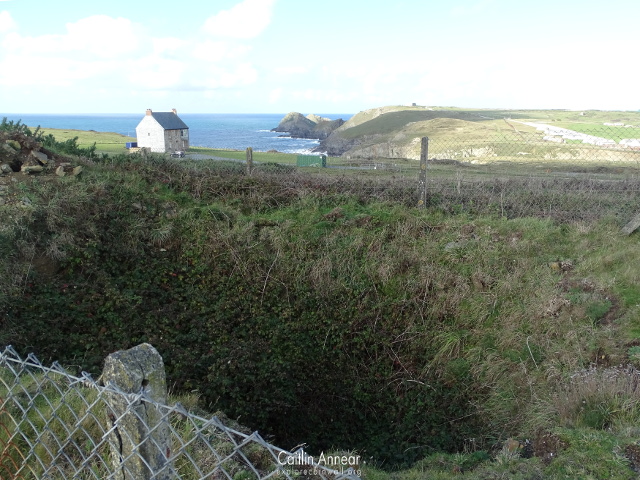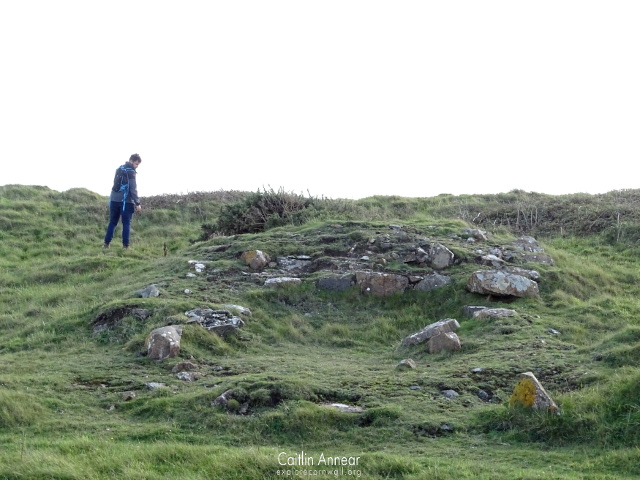Dotted along the coast between Holywell and Perranporth are the remains of several lead and silver mines, the two largest being Penhale and Wheal Golden. Both of these followed a north to south lode and were worked as both independent companies and joint ventures with some of its neighbours.
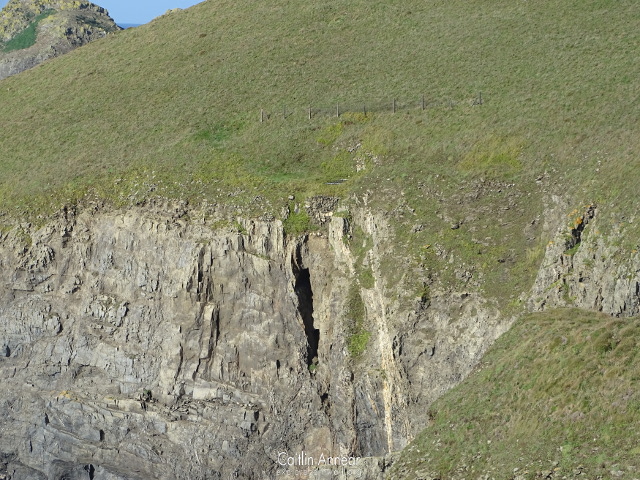
The Penhale section was first recorded in 1777 although little else is known about this period. The next mention is in 1820 when an engine was erected and Penhale and two years later a smelting house put to work at Wheal Golden. The same year 60.5 pounds (27 kg) of silver was removed from Wheal Golden. However, this progress came to a halt in 1824 when a drop in lead prices resulting in Wheal Golden’s closure, with Penhale following not long after.

Penhale reopened for a short time in 1830, but it wasn’t until 1848 when a new company named Wheal Golden Consols was formed with Wheal Golden and East Wheal Golden that much work occurred. In 1851 flooding in the Penhale section of the group cost its profits for that periods in repairs. The mine closed again in 1855.
The years 1866 to 67 saw another attempt at reworking Wheal Golden, again unsuccessful. In the same year Penhale was reopened under the Penhale and Lomax Company; during this reworking two new engines, a count house and numerous other buildings were erected at great expense. This quickly led to the bankruptcy of one its main shareholders and placed the business into liquidation. Two further attempts were made to work both Penhale and Wheal Golden between 1867-71 and 1871-73, respectively, with some success, but this was the sections final hurrah.
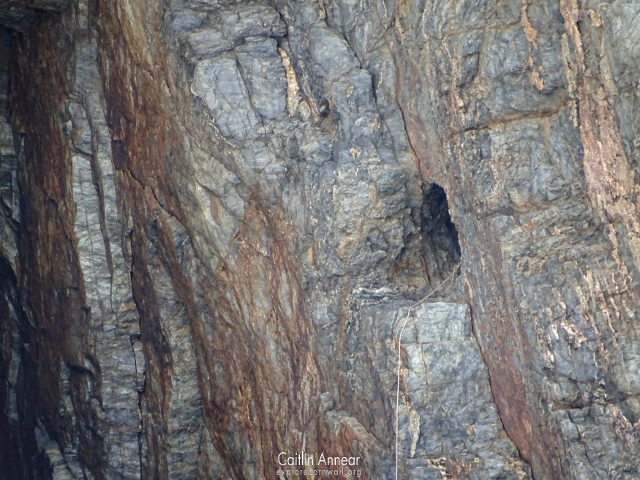
Over the course of their many lives, both mines and its amalgamations had a number of engine houses. Prior to 1820 a 58″ double acting engine was installed at Penhale and during the 1850’s a 50″ pumping engine, a hauling and crushing engine and three horse whims were erected at Wheal Golden Consols. The Penhale and Lomax Company installed a 66″ pumping engine and a 24″ whim during their expensive refitting of the site.
Both sites used numerous shafts, only some of which were named. These include Young (70-fathoms/128m), Maxwell’s (70-fathoms/128m), Engine (100-fathoms/183m), Whim (100-fathoms/183m), Hall’s (90-fathoms/165m) and Leggo’s (70-fathoms/128m).
In 1777 Penhale raised 41 tons (41,658 kg) of ore. Between 1849-55 Wheal Golden produced 2,560 tons (2,601,080 kg) 68% lead and 24,200 oz (686 kg) silver. From 1849-70 Penhale brought up 100 tons (101,605 kg) 8% copper, 1,270 tons (1,290,380 kg) 69% lead, 7,150 oz (203 kg) silver, 7,060 tons (7,173,291 kg) brown haematite (Fe₂O₃) and 82 tons (83,316 kg) of spathic ore (FeO₃).
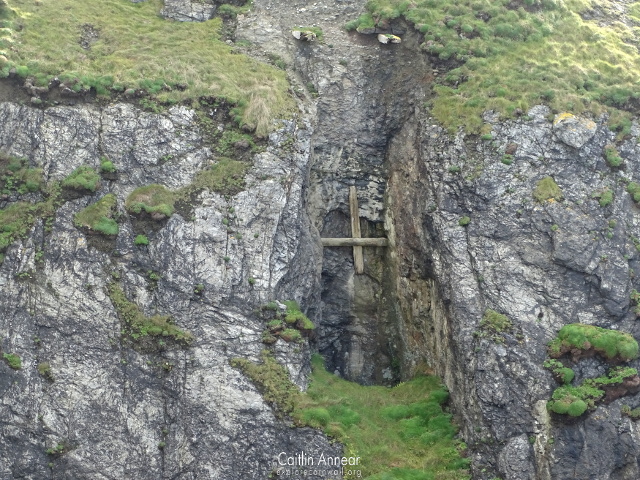
Access is available to anyone along the coastpath between Perranporth and Holywell Bay, although some sections may be unsuitable for those with mobility issues. While the vast majority of the shafts in this section have been secured in some fashion, many are very close to the cliff edge and remain dangerous. While you can view many of the shafts from the coastpath they shouldn’t been approached.
The closest parking is either at Perranporth or Holywell Bay.
Cole, R. and Tapper, B. (2004) Penhale Training Area, Cornwall. Available at: http://map.cornwall.gov.uk/reports_event_record/2004/2004R014.pdf.
Dines, H. G. (1956) The metalliferous mining regions of south-west England. British Geological Survey.

